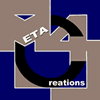Planning, Developing, and Promoting Successful Small Business
Websites
Table of Contents
Website Planning
Plan Your Web Site Effectively for Max Success
Types of Websites
Explore the types of Web Site Business Models
Site Types 2
More information on the strategic types of sites
Strategic Planning
Strategy Planning is essential to Success
Strategic Planning
2
Make sure your strategy is up to snuff
Strategic Planning
3
Technical Strategic Planning an Outsourcing Contract Work
Strategic Planning
4
More on Outsourcing Contract Work
Content Planning
Deciding what will go on your business site and who will provide it
Content Planning
2
Determing a schedule for content management
Content Planning
3
Automation for Content Syndication
Keyword Planning Suggestions on preparing keyword research for your site.
Information Architecture
Brainstorming and organizing the architecture of your website.
Information Architecture 2
More discussion on the lower tiers of site heirarchy
Technology Planning Scaleability considerations for large and growing sites.
Tech Planning 2Weighing the value of flash technology.
Budgetary Planning
Creating a budget and using it effectively
Budgetary Planning
2
What type of web host will you need?
Budgetary Planning
3
Labor related expenses for site creation
Budgetary Planning
4
Measuring financial success and ROI
Developing a Web Site
Design and Development
Establishing the importance of credibility in design.
Form
Versus Function
Establishing the design priorities of a site.
Writing the Initial Code
Programming considerations for when you get down to programming.
Validation and Usability Testing
Promoting a Web Site
Planning, Developing,
and Promoting a Successful Small Business Website
Website Design and Development Page 21
Form vs. Function
“In 1896, architect Louis Henri Sullivan said, “Form ever follows function.” (Finck, 1999, digital-web.com) This quote has proven timeless, and is very applicable to the design and development of websites. It should be the goal of any developer to meld the design and functionality of a site so that they are inseparable to the user. Form and function of a site should have a symbiotic relationship that makes user experience the priority. It is easy to create a site that becomes one-sided if the balance of form and function is not approached carefully.
One of the unfortunate aspects of website creation to date has been that many of the graphic designers have migrated from the print medium. The ideas and attitudes that have carried over from the former medium are not always applicable to this new medium. Form must always follow function with regards to a website. The form of a website should blend with the function, which will determine visitor retention rate and the duration of their stay. The form should complement the function and serve to attract visitors.
There are several dilemmas to balance when approaching form and function. In the past, websites have done a very poor job of intertwining the two elements. The form of a website is defined by usability and aesthetic elements. Anything that makes a site more appealing to the senses can generally be thought of as a form element. The form of a website is important because it increases the satisfaction of visiting a website by prompting emotional response. A site that lacks form will seem dull and drab and not entice users for a prolonged initial visit to experience the site functionality. The function of a website is defined by site performance.
The functional elements of a site are what ultimately bring value to the user
experience by helping to “solve a problem”. A site that lacks function
will not retain the users that strong form will attract. An example of the dilemma
posed by form and function would be the design of a website when there is a
strong need to have the site rank high in search engines. The most aesthetically
pleasing sites are not fit to rank well in search engines, and the best ranking
sites are normally a long ways from the best looking. It is very necessary to
find a balance between these two elements to create a successful website for
a business.
Appendices
(All in a single document) Appendix
1-1: Overture Search Term
Research Tool
Appendix 1-2: Wordtracker Search Query Research Tool
Appendix 1-3: Google Sets Website Theme Research Tool
Appendix 1-4: Reach/ Acquire/ Convert/ Retain
Chart Appendix
2-5: Zehnder’s of Frankenmuth Information Architecture Flowchart
Appendix 2-6: Search Engine Themes Pyramid Information Architecture Example
Appendix 2-7: Webpage Download Time by File Size Chart
Appendix 2-8: Expected Locations for Common E-commerce Elements
Appendix 2-9: Website Usability Checklist
Appendix 2-10: Text Vs.Code Ratio/ Content Near the Top of Souce Code Examples
Appendix 3-11: Overture Bid Price Tool
Appendix 3-12: Webalizer Website Visitor Tracking Tool
Appendix 3-13: AW STATS Website Visitor Tracking Tool Appendix
3-14: Clicktracks Website Statistics
Analysis Tool
References
Author Notes
Additional Bonus:
101 Free Search Engine Optimization
Tips
Work with a top search engine marketing company in Michigan. For your local search engine marketing and pay-per-click advertising needs.
©Copyright 2004 - Infinity
Planning, Developing, and Promoting a Successful Small Business Website
Meta4Creations - Strategic
Internet Marketing Consulting
Corporate Internet
Marketing Consultant
